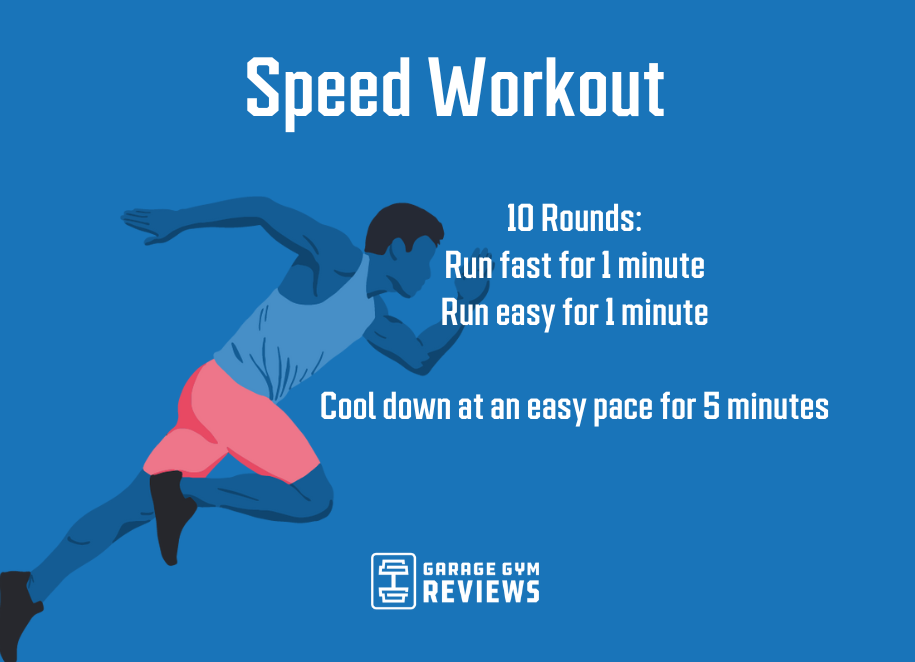Master Your Running Workout: Reliable Strategies for Success
Wiki Article
Getting Over Discomfort in Operating: Strategies and Techniques That Work
Pain is a common companion for many runners, typically functioning as a barrier to accomplishing their preferred goals. With the appropriate approaches and strategies, it is possible to conquer and even protect against the pain connected with running. By exploring different methods such as comprehending the different sorts of running pain, enhancing footwear and type, incorporating cross-training and strength workouts, implementing efficient recovery approaches, and preserving appropriate nutrition and hydration, joggers can potentially reduce their discomfort and improve their overall running experience.Understanding Various Kinds Of Running Pain

An additional kind of running pain is joint discomfort, which can show up as a sharp or achy discomfort in areas such as the knees, hips, or ankle joints (running workout). Joint pain may be triggered by factors like incorrect running kind, overuse, or underlying problems like arthritis (excellent idea). It is important to set apart between muscle mass pain and joint discomfort, as the latter may need clinical focus to stop more injury
Understanding the different kinds of running discomfort is crucial for reliable management and avoidance strategies to ensure a risk-free and pleasurable running experience.
Appropriate Shoes and Running Type
To maximize performance and minimize the danger of running-related injuries, choosing proper footwear and keeping appropriate running form are important elements for runners of all degrees. It is recommended to select running shoes that are specifically developed for the person's foot type, running gait, and the type of running activity they involve in.
Cross-Training and Stamina Exercises
Strength workouts, like squats, lunges, and core exercises, play an important function in maintaining muscle mass and enhancing running effectiveness. They can deal with muscular tissue inequalities, boost dexterity, and increase power result, all of which are important for running performance.Incorporating cross-training and stamina workouts into a running program should be done purposefully. It is very important to permit sufficient rest in between running sessions and cross-training tasks to stop overuse injuries. Furthermore, concentrating on proper type and strategy throughout stamina exercises is crucial to maximizing their advantages and reducing the threat of injury. By integrating these elements right into a running routine, runners can develop a more powerful structure, enhance efficiency, and delight in a much more lasting running experience.
Recovery and Relax Strategies
Having actually established the relevance of cross-training and strength exercises in a detailed running routine, focus can currently be guided towards Recovery and Rest Techniques as essential parts for maximizing efficiency and reducing the risk of injuries. (running strategy)Recuperation after running is critical for muscle fixing and growth. Methods such as foam rolling, stretching, and massage aid in lowering muscle mass discomfort and improving versatility. Ample remainder in between runs enables the body to recoup and adapt to the physical anxiety, avoiding overuse injuries.
Including active healing days right into a training schedule, where low-intensity tasks like strolling or cycling are performed, can improve blood circulation and advertise healing without placing excess stress on the muscular tissues. In addition, proper hydration and nutrition play an important duty in the recovery process by replenishing shed liquids and nutrients.
Quality sleep is an additional crucial aspect of recuperation that ought to not be neglected. Throughout sleep, the body undertakes repair service and regeneration procedures, adding to general physical and mental wellness. By Discover More prioritizing recovery and remainder techniques, joggers can maintain optimum efficiency levels and lower the likelihood of experiencing discomfort or injuries.
Nourishment and Hydration for Runners
Carbs supply energy for running, while proteins aid in muscular tissue fixing and recovery. Ample hydration is also essential to maintain optimum efficiency, as even mild dehydration can adversely affect running efficiency. In addition, timing dishes and snacks suitably prior to runs can help avoid intestinal pain and offer the necessary energy for peak efficiency.Conclusion
Finally, by recognizing the various kinds of running pain, wearing appropriate footwear, maintaining right running type, integrating cross-training and strength exercises, focusing on recovery and remainder, and concentrating on nutrition and hydration, joggers can successfully conquer pain and boost their performance. Applying these approaches and techniques can aid joggers avoid injuries, boost their endurance, and ultimately appreciate a more fulfilling running experience.Report this wiki page